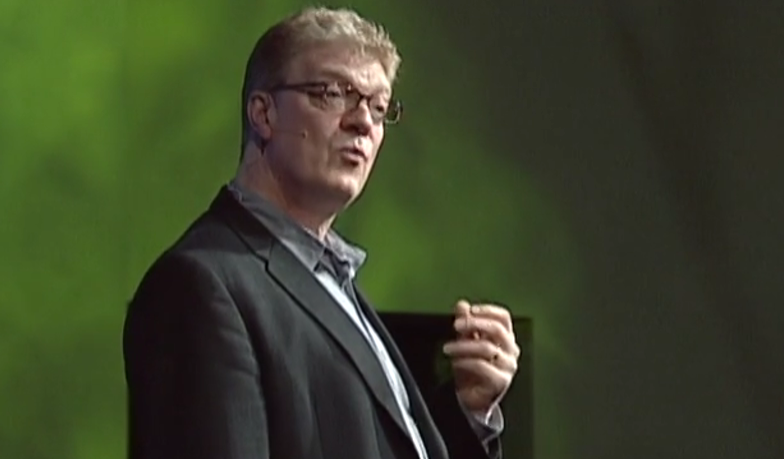Do Schools Kill Creativity?

© Freepik
Have you ever wondered if our current education system is stifling creativity in our youth?
Despite the emphasis on standardized testing and academic performance, there is growing concern that schools are actually killing creativity.
The ability to think creatively is more crucial than ever. Yet, traditional education systems often prioritize rote memorization and conformity over nurturing individual creative expression.
Perspectives on Creativity in Education
In his widely viewed TED talk, Sir Ken Robinson argues that schools suppress creativity, asserting that education often diminishes rather than nurtures it. He emphasizes the importance of creativity, likening its significance to literacy and advocating for its equal recognition and support in education.

Tim Leunig, while serving as Chief Scientific Advisor at the Department for Education, countered Sir Ken Robinson’s stance in a TEDx talk.
He argued that genuine creativity is rooted in knowledge, which itself is built upon literacy. Leunig contended that schools, by developing literacy skills crucial for further learning, actually foster creativity by laying essential foundations for young people.
The Story of Gillian Lynne
Robinson illustrates the stifling of creativity in schools through the story of Gillian Lynne. Despite being seen as a problem student due to her inability to sit still and concentrate, a doctor diagnosed her real talent when he observed her respond to music by dancing.
This recognition led to a successful career in ballet and choreography, including renowned works like Andrew Lloyd-Webber’s Cats and Phantom of the Opera. Gillian’s story underscores how schools often overlook extraordinary talents, mistaking them for behavioral issues or learning disabilities.
Lessons From Tim Leunig and Whether Schools Kill Creativity
Leunig illustrates how schools foster creativity by emphasizing the foundational knowledge crucial for innovation. He traces the Enlightenment’s impact, highlighting advancements like crop rotation that enabled England’s agricultural productivity.
He emphasizes the pivotal role of knowledge in inventions like Thomas Newcomen’s steam engine, explaining how understanding the principles of steam condensation and vacuum production facilitated transformative developments such as factory operations, mine drainage, locomotives, and global trade via steamships. Leunig contends that these breakthroughs, central to economic history, underscore the indispensable role of knowledge in fostering creativity and progress.
Creativity Opinions from Robinson and Leunig
These two talks highlight contrasting views on creativity. Robinson defines creativity as rooted in imagination, self-expression, and divergent thinking, suggesting it is innate and often exhibited by individuals who may struggle academically but excel in alternative forms of intelligence, such as kinesthetic abilities.

In contrast, Leunig views creativity as dependent on acquiring and applying existing knowledge, emphasizing logic and scientific principles to solve complex problems. He argues that creativity emerges within specific knowledge domains inaccessible to those lacking literacy. Thus, while Robinson sees creativity as a natural talent separate from literacy, Leunig sees it as a cognitive skill developed through education and knowledge acquisition.
What Is the Difference?
The differences between Robinson’s and Leunig’s views on creativity highlight the importance of clarifying its meaning across different contexts. This distinction is crucial for schools, especially those focused on nurturing students’ creativity, as it underscores that creativity varies significantly depending on whether it’s perceived as innate and independent of formal education (as Robinson suggests) or as a skill cultivated through knowledge and logic (as argued by Leunig).
Clarifying these perspectives is essential to avoid vague discussions and to effectively foster creativity in educational settings.
Rethinking Critical Thinking Skills Across Disciplines
Professor Dylan Wiliam argues in his paper “Principled Curriculum Design” that research on skill acquisition indicates skills developed through training and practice are typically specific to the area of training and not easily transferred to other domains.
Therefore, he challenges the notion of generalized “critical thinking skills,” noting that critical thinking varies significantly across disciplines. Mathematicians and historians may both emphasize critical thinking, but their definitions and applications differ substantially. This highlights the misconception that they describe the same concept.
The Link Between Creativity and Skills
Creativity, like other skills, encompasses a variety of distinct processes that differ across disciplines. For instance, creativity in mathematics contrasts sharply with creativity in visual art.
It deviates from mathematical principles, such as stating 2 + 2 = 3, which is not creative but rather illogical. Genuine creativity involves pushing the boundaries within a specific field while maintaining its principles.

Similar arguments apply to skills like problem-solving, communication, and learning how to learn. While some transfer of these skills across different contexts is possible, research emphasizes that effective teaching and practice within specific disciplines are essential for developing these skills.
In essence, fostering creativity in mathematics requires teaching creativity within mathematics classrooms, just as critical thinking in history demands teaching within historical contexts.
Wiliam’s on Curriculum Design
Dylan Wiliam proposes using creativity as a tool to evaluate the depth and breadth of the curriculum across disciplines. This is rather than treating it as a standalone skill or limiting it to traditionally perceived “creative subjects.” He advocates for a curriculum approach where all subjects are taught in an epistemically broad manner, as described by Guy Claxton.
For instance, history should not simply focus on facts and dates. It should serve as an apprenticeship in historical thinking, encompassing critical skills such as understanding biases in sources, analyzing chronology, and exploring cause-and-effect relationships.
Educational Goals and How Schools Can Stop Killing Creativity
Despite ongoing debates over what and how to teach children in schools, there is widespread agreement on the essential role of disciplines. Each discipline possesses its distinct structure, rules, language, logic, perspectives, and cognitive habits. Even critics of traditional school models, such as Howard Gardner in his recent piece “Re-Imagining Learning,” acknowledge the constraints and importance of disciplinary frameworks.
The enduring goals of education include mastering disciplines, effective communication, and civil engagement in discourse. These aims, rooted in ancient wisdom, emphasize understanding truth, appreciating beauty, and embodying goodness as essential for individuals to thrive as capable, ethical citizens and contributors to society.
What Does Education Need?
Gardiner’s statements encapsulate two foundational perspectives on education. Firstly, he agrees with Martin Robinson’s view that mastering disciplines, effective communication, and civil engagement mirror the Trivium, grammar, rhetoric, and dialectics, which historically underpin a comprehensive education as described by John Milton.
Secondly, Gardiner echoes the RSA’s belief in education encompassing academics (truth), aesthetics (beauty), and ethics (goodness). This shows a holistic approach that nurtures intellectual, practical, and moral development.

So, Do Schools Kill Creativity?
No, standardized tests alone cannot cultivate students’ creativity. This is unless schools adhere to two crucial principles.
Firstly, providing a rich, inclusive curriculum that embraces creative subjects like visual and performing arts, and ensuring every child has the opportunity to explore their creative potential.
Secondly, recognizing that creativity encompasses diverse processes and understanding the foundational role of disciplines in education. Schools must integrate these disciplines into their curriculum design to effectively foster creativity across all subjects.
What do you think? Do schools kill creativity?
You might also want to read: What You Wear Changes the Way You Think


